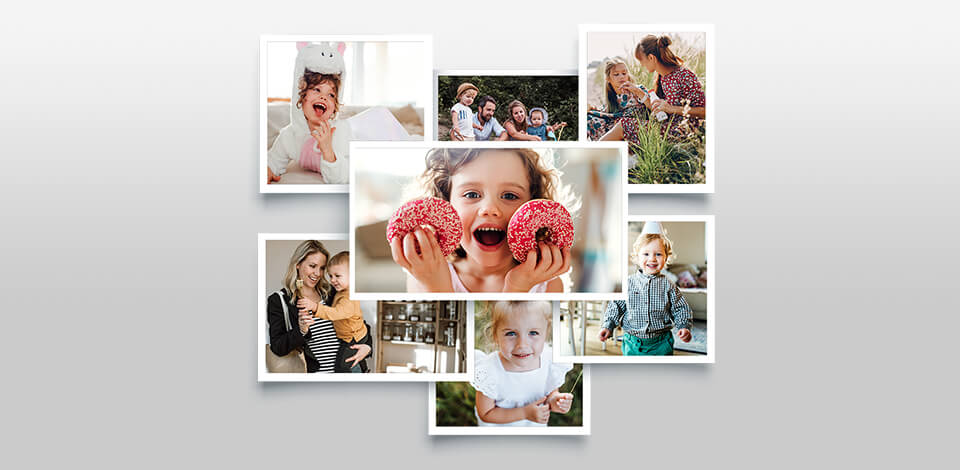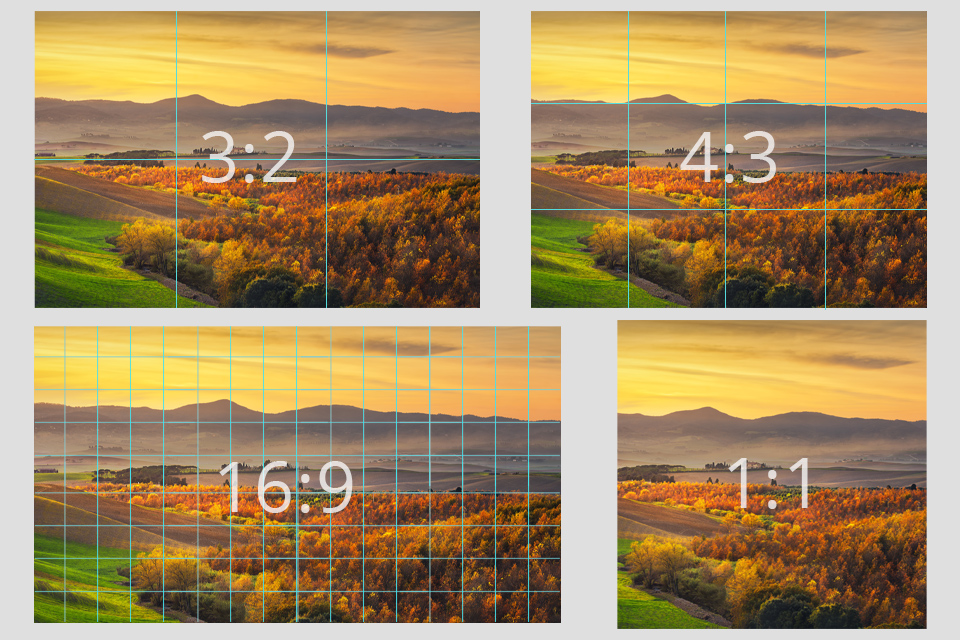
If you use a photo in a range of places, whether digital or physical, you definitely need to perform resizing. Since one size never fits all, educate yourself to know the difference and where it is best to use particular dimensions.
If you want to know all the subtle differences between the standard photo sizes, this guide is for you. There are the sizes most commonly used for printing, that extending to frames as well, and those fitting different social media platforms. Plus, you can easily convert these dimensions between pixels and inches, whichever is more comfortable for you.

The frame sizes and aspect ratios are different things, the latter describing the correlation between the width and height of the image rather than its dimensions. If the size of a picture is 6x4, you are dealing with a 3:2 ratio which tells you that for every three segments of one side there are two segments of the other. You can’t know how long any side of the image actually is by just looking at this value, only the width compared to the height:
1:1 ratio –is simply a square and currently, this format is used for all Instagram images, profile pictures on many platforms, and related apps.
3:2 ratio – is a rectangle that you can most commonly find in photo frames and albums, with photo paper being sized like this too.
4:3 ratio – is another rectangle that is more common for devices like TVs, computer screens, as well as moviemaking.
16:9 ratio –very wide rectangle is commonly used in panoramic photography and videography, some TVs, and also the cover of your social media profile. You will certainly recognize it as 1920x1080 or the Ultra HD if you’re into watching movies.
These common photo sizes are important to make sure that it is easy to fit in the medium where you want it to be viewed. Following one of the cliches, you can avoid having blank spaces on the screen or paper and, alternatively, finding elements of the image trimmed off. If the picture doesn’t come in the right size, it is very easy to correct in any image editing app.
From posters to banners and panoramic shots, you can make printouts of any format providing that you know what dimensions it has. So, before placing an order with a photo printing service, you need to understand the different sizes to avoid the disappointment of finding that a part of your photo has been cropped during printing.

If you are trying to figure out what is the standard picture size, the few options below will be covering almost everything you are likely to encounter. What’s nice about the sizes being standardized is the fact that you can easily use your home printer to get those pictures made.
4×6: This is probably the size that you most commonly see in everyday life. It is natural for 35mm photography and the industry in general because the camera’s viewfinder is shaped exactly like that. If you look around, you will find the size used in everything from family pictures to pieces of art, photo albums falling in the list largely.
5×7: Slightly larger, this format also has a different aspect ratio so your images will need to be trimmed to fit it fully. These dimensions are often preferred for portraits because they allow to put a stronger emphasis on the person and make the image more impressive with this simple trick.
8×10: The last stop before entering the large-scale printing segment which is used for posters, canvas pictures, various custom items that are a popular idea for a gift. Being this big, it is very appropriate for group images or portraits to frame and exhibit.

This was one of the most popular picture frame sizes in the 80s thanks to the great success of Polaroid. With time, the new digital cameras and an increasing interest in videography have squeezed it out of the market almost entirely. In its attempt to stand out, Instagram revived it and quite successfully. Most often, this format is marked as 1:1, without clear dimensions, since each side must be equal to the neighboring one. If you see a square frame, it is most likely to measure as one of these:
This is my favorite format because it is ideal for printing and scrapbooking. However, it requires cropping at the sides, which must be taken into account when shooting to make sure you don’t lose an important part of the frame.

To see whether you can use a picture for this, you need to know how many pixels it has or its resolution. To get a clear image, you should correlate the standard photo sizes to the "dots per inch" or DPI, where each dot is a pixel.
If you’re making a large print, it is likely that it will be viewed from a distance and thus you can actually get away with a smaller DPI. For instance, if a viewer is expected to not approach closer than three feet, a 100 DPI would be sufficient. A good printing service would not even consider going below that if they want to have any reputation. For smaller prints with a closer viewing distance, go for a DPI of 300. Below are some measurements you can use:
Any of these would be good as a kind of décor, a warm memory or a stylish accent for your table or living room wall. For printing such pictures, only a large format photo printer is suitable, the one used for posters and even banners.

These are basically the least common frame sizes since usually such pictures can be tens of times in width than in height. Here are examples of panoramic photo sizes:
The most wide-used dimensions are four by six inches which can be called the standard of photography. It has just the right size for a small frame or album and the 2:3 aspect ratio is perfect for printing out modern digital images from either cameras or phones.
The size of a digital image is its dimensions in pixels which are basically the same thing as resolution. The easiest way to find it in Windows is to go to the Properties menu available when you right-click and on Mac there is the "Get Info" option.
To convert common picture frame sizes, you only need to know that 1 inch is 2.54 cm. If we recalculate 4x6 inches in cm, then we get 10.16x15.24 cm, most often it is called more simply - 10x15.